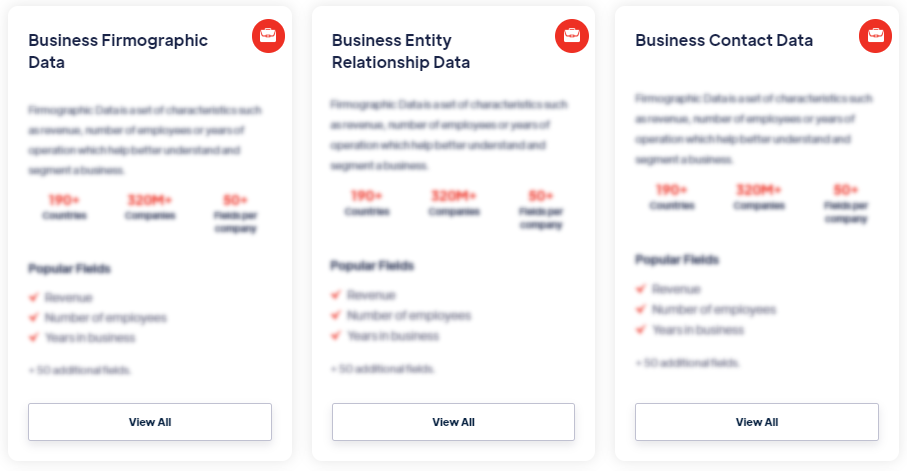Best
Machine Learning (ML) Data
Products
ML Data is a set of structured, semi-structured, or unstructured data that serves as input to machine learning algorithms. It consists of features (input variables) and target variables (labels or outcomes) used to train ML models. ML Data can come from various sources, including databases, files, sensors, APIs, or web scraping. Read more
Our Data Integrations


Request Data Sample for
Machine Learning (ML) Data

Browse the Data Marketplace

Frequently Asked Questions
1. What is Machine Learning (ML) Data?
ML
Data is a set of structured, semi-structured, or unstructured
data that serves as input to machine learning algorithms. It
consists of features (input variables) and target variables
(labels or outcomes) used to train ML models. ML Data can come
from various sources, including databases, files, sensors, APIs,
or web scraping.
2. How is ML Data collected?
ML Data can
be collected through various methods, including manual data
entry, data extraction from databases or systems, web scraping,
sensor data collection, or using publicly available datasets.
Data collection can also involve the use of data preprocessing
techniques to clean, transform, and prepare the data for ML
tasks.
3. What types of information are included in ML Data?
ML Data can include a wide range of information depending on
the specific problem and application. It may consist of
numerical data (e.g., sensor readings, financial data),
categorical data (e.g., customer demographics, product
categories), text data (e.g., customer reviews, tweets), image
data (e.g., photos, scans), or time series data (e.g., stock
prices, weather data).
4. How is ML Data used?
ML Data is used to
train, evaluate, and improve ML models. It helps in pattern
recognition, predictive modeling, classification, clustering,
regression, and other ML tasks. ML models learn from the
provided data and make predictions or decisions based on the
learned patterns. ML Data is also used to evaluate model
performance, validate model accuracy, and test the model's
generalization on unseen data.
5. What are the challenges and considerations of ML Data?
ML Data may face challenges such as data quality issues (e.g.,
missing values, outliers), data imbalance (unequal distribution
of classes), noise, bias, or privacy concerns. Data
preprocessing steps, including data cleaning, feature selection,
and feature engineering, are crucial to address these challenges
and improve model performance. Additionally, ML Data should be
representative and diverse enough to capture the underlying
patterns and avoid overfitting or underfitting of ML models.
6. What are the benefits of using quality ML Data?
Using quality ML Data leads to more accurate and reliable ML
models. High-quality data helps in better understanding the
problem, identifying relevant features, and training models that
generalize well to new, unseen data. Quality ML Data also
enhances the interpretability, fairness, and ethical
considerations of ML models and their applications.
7. How is ML Data evolving?
ML Data is
constantly evolving as new data sources become available,
technology advancements enable the collection of more complex
and diverse data types, and data labeling techniques improve.
The availability of large-scale datasets, open-source datasets,
and data marketplaces has facilitated ML research and
applications across various domains. Additionally, advancements
in data privacy and ethics are shaping the way ML Data is
collected, stored, and shared, promoting responsible and
transparent use of data.
